The most important eight hours of the day are overlooked by many of us because we’re unconscious for most of it. You might not think the mattress you sleep on could be such a key part of your wellness, but sleeping on the “wrong” one could be the catalyst for many other health issues. Healthy Sleep’s goal is to help you find the absolute best mattress for your needs and make those eight hours as restful as they can be.
Amerisleep AS3 – Editors’ Choice
We recommend the Amerisleep AS3 because it offers both sturdy support and a soft comfort layer, promoting healthy spinal alignment throughout the night and giving your pressure points a soft place to land. The AS3 contains Bio-Pur® memory foam, created with more space between the foam particles so it bounces back in four seconds, so you won’t feel stuck in your mattress as you move around at night. Most side sleepers prefer a medium-firm mattress, and the AS3 is just that. Plus, it comes with a 100-day sleep trial, free shipping, free returns, and a 20-year warranty. Buy Now
Research & Resources
In making this article, we:
- Researched 25 leading brands
- Referenced dozens of website reviews for the most exhaustive information
- Spent over 20 hours writing and revising to deliver the most value-driven, accurate content possible
Best Mattresses of 2024
| Brand | Mattress | Best for... | May not work for... | Price for a Queen |
|---|---|---|---|---|
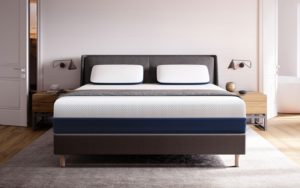 | Editors' Choice: Amerisleep AS3 |
|
| $1199 |
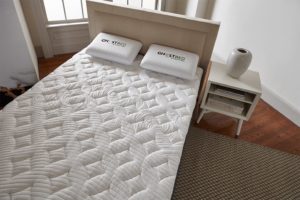 | Ghost Bed Luxe |
|
| $1575 |
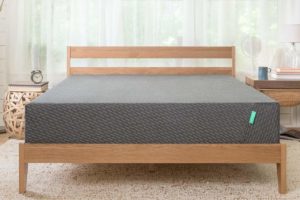 | Tuft & Needle Mint |
|
| $995 |
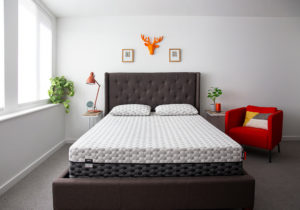 | Layla Memory Foam |
|
| $874 |
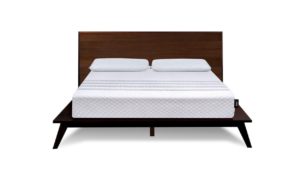 | Leesa Hybrid |
|
| $1440 |
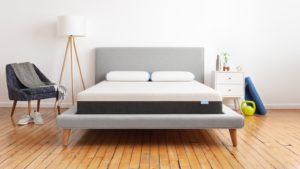 | Bear Mattress |
|
| $840 |
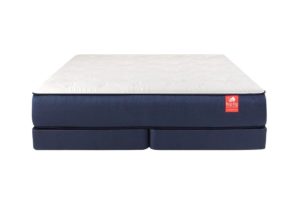 | Big Fig |
|
| $1699 |
Our Criteria
How do you choose the “best” mattress? The truth is, everyone has different needs – what worked perfectly for your best friend may not work for you. With the new online mattress shop revolution, it can be difficult to find the one, especially when you’re drowning in lots of confusing jargon like innerspring coils, cooling gel, ILD ratings, and more. What does it all mean? At Healthy Sleep, we’ve created this guide to help you choose the best mattress for your lifestyle.
Luckily, there are lots of choices available these days, and doing a little bit of research can yield a good night’s rest.
We used certain criteria when choosing our top mattresses:
1. Amerisleep AS3 – Editors’ Choice for Best Mattress
The Amerisleep AS3 is the company’s most popular mattress because it’s got a medium feel, so it’s versatile enough for side sleepers and combo sleepers. Its construction ensures that it’s not too soft or bouncy, so you won’t feel your partner moving around all night. At the same time, it’s HIVE® comfort layers enable you to sleep comfortably on your side without waking up achy and sore.
The mattress measures in at 12” tall, making it substantial enough for most body types and sleep styles. Let’s break down all the layers of this bed to give you a complete picture:
- Layer 1: FDA-determined Celliant® cover contains thermoreactive minerals which dissipate body heat and turn it into infrared energy. In short, you won’t sleep hot on this bed.
- Layer 2: 3” of Bio-Pur® foam is five times more breathable than traditional memory foam. Its advanced open cell structure cradles your pressure points and lets your muscles recover after a long day.
- Layer 3: The 2” affinity transition layer is the softest layer in the mattress. It contours to your body and evenly supports your pressure points, so you won’t feel like you’re sinking down into the mattress.
- Layer 4: 7” of Bio-Core® resists sagging after years of normal use. It’s also partially made from plants instead of petroleum, so you won’t experience that weird “memory foam” smell with this mattress.
Overall, we wanted to choose a mattress that had a luxury feel, adequate support, cooling properties that actually work, and the potential to accommodate multiple sleep styles. While this mattress isn’t the cheapest one on our list, it’s still an excellent price given its superior construction. Customer reviews of the AS3 mentioned the mattress was supportive and even helped to alleviate their longtime pain issues. Amerisleep offers a 100-night sleep trial so you can make sure this bed is the right one for your needs, and if you change your mind, they offer free returns and a free pickup of the mattress.
2. GhostBed Luxe
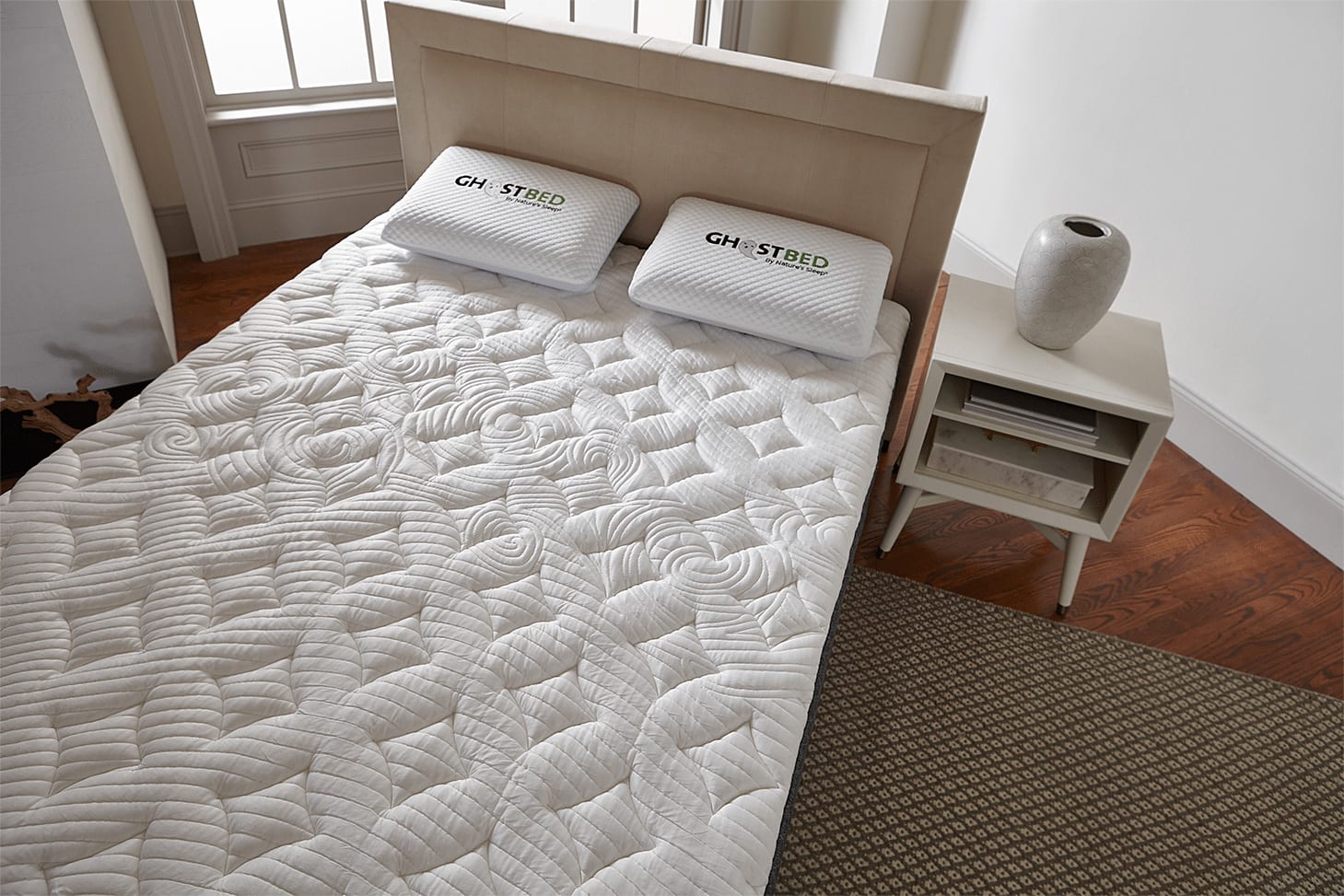
The durability of a mattress depends on its components, structure, the foundation you use, as well as your weight, height, and sleep preferences. Make sure you know the suggested foundation(s) for the bed you buy, since using an incompatible one often voids the warranty and can cause your bed to break down much faster than it normally would. With normal and proper use, a foam mattress typically lasts up to 7 years. An innerspring mattress can last anywhere from 7-10 years (again, this depends on the quality of the springs and the mattress’ construction). A hybrid, which is a combination of memory foam and innerspring coils, usually lasts for around 6 years, and a latex lasts around 8 years or more (latex is one of the more durable mattress materials). You can read more about mattress materials in the section below.
Our choice for most durable mattress goes to the GhostBed Luxe, which is made with aerated latex and a high-density support core, so it will resist sagging over time.
Features:
- GhostBed Ice top layer, which acts as a cooling layer
- Comfort layer is made of aerated latex, an extremely durable material
- Support layer is made of 2” GhostBed Bounce proprietary foam
- 7.5” high-density support core
3. Leesa Hybrid
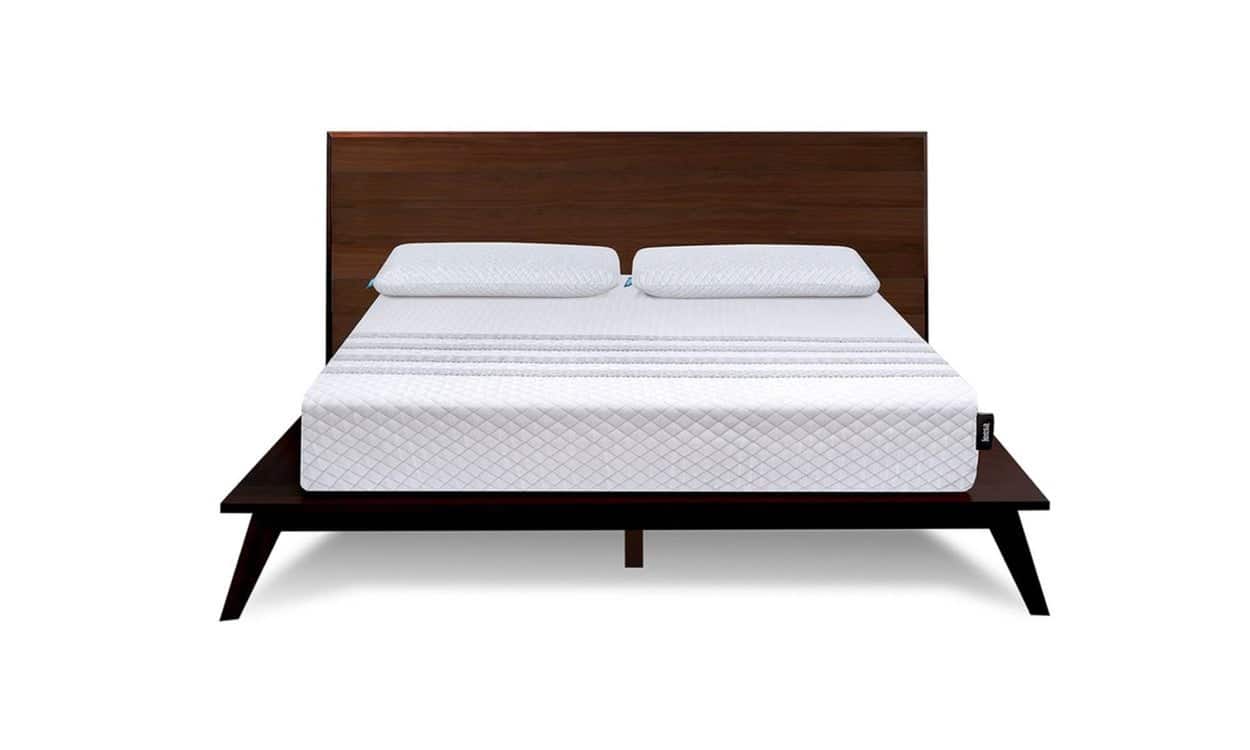
About 40 million Americans are affected by insomnia every year, and they’re trying dozens of remedies to get a handle on it. Medications, essential oils, meditation apps, blackout curtains, avoiding screen time before bed, and a host of other solutions creep up when you do a quick Google search for “insomnia solutions.” It’s true that many of these things can alleviate symptoms, but what if instead we got to the root of the problem?
Insomnia has been linked to acid reflux, back pain, depression, anxiety, sleep apnea, and more. So, is your lack of sleep causing these issues, or are these issues causing you to toss and turn? The bottom line is that getting a good night of rest could be the key to at least patching up some of the gaping holes your sleepless nights are leaving behind, along with potentially alleviating the other health issues you’re suffering from.
According to Michael Decker, PhD, RN, associate professor at Georgia State University and spokesman for the American Academy of Sleep Medicine, “When you lie on any part of your body for an extended period of time, the weight of it reduces the flow of blood through those blood vessels, which deprives the skin of oxygen and nutrients.” At this point, nerve cells and pain sensors in your skin send a message to your brain for you to roll over, which restores blood flow to the area. Therefore, a mattress that reduces those pressure points on your body should help you sleep better.
A study done on the effectiveness of a therapeutic mattress in the improvement of sleep quality concluded that mattresses with “infrared-emitting units” helped to reduce migraine headaches and thus, insomnia in the patients1. The Amerisleep AS3 has an FDA-determined Celliant® cover made of infrared yarn, which absorbs body heat and gives off infrared energy. This can aid in circulation and improve your sleep quality, helping you fall asleep faster and stay asleep longer.
One study examining the link between insomnia and chronic pain showed that 90% of patients attending a pain management center also reported at least one sleep complaint, and more than 65% of patients identified themselves as “poor sleepers.” A mattress that gently cradles these pressure points while also offering support may be the answer for those losing sleep due to pain.
We recommend The Leesa Hybrid Mattress for light sleepers or insomniacs because it offers support for those who sleep on their backs or sides, and its hybrid construction ensures comfort and alignment.
Features:
- Top layer is made of 1.5” foam, while a 1.5” memory foam layer to relieves pressure and 6” coils in the support layer to conform to your body
- Foam and coils limit motion transfer
- Edge support so you don’t experience the sensation that you might roll off
4. Tuft and Needle
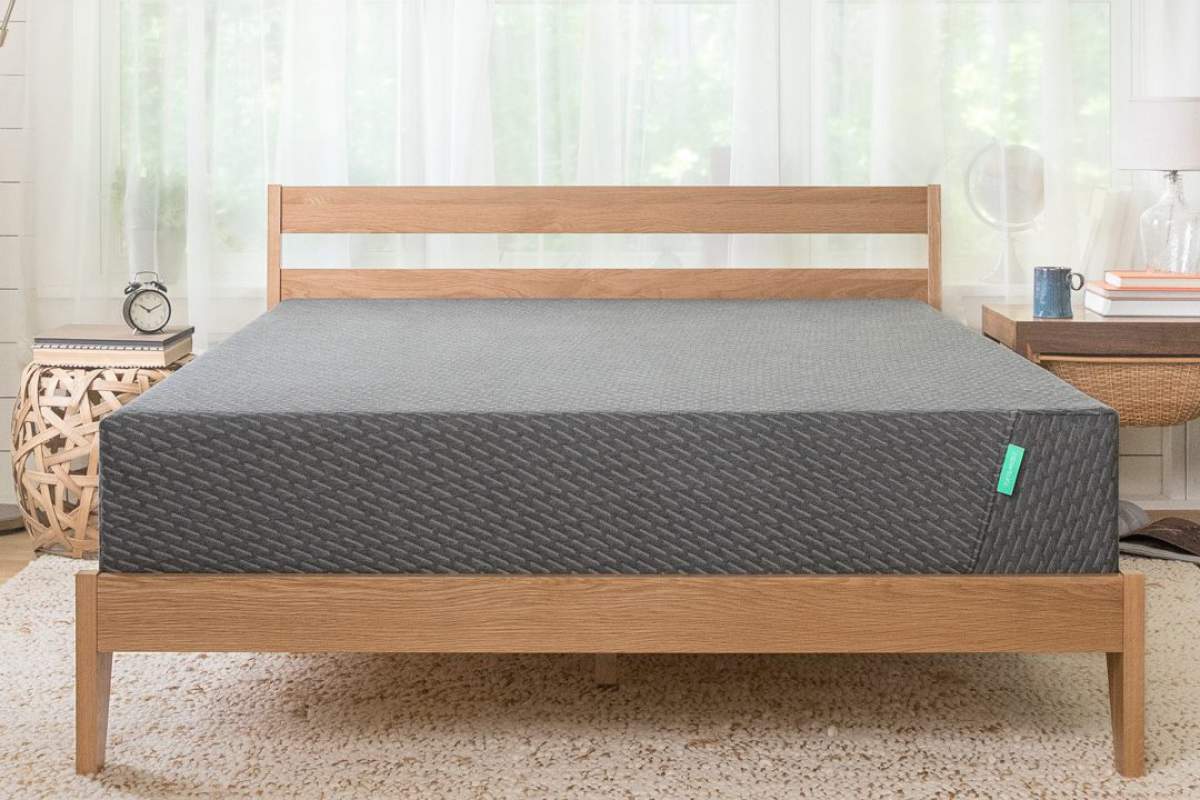
In online forums and message boards dedicated to personal finance or frugality, consumers expressed the desire to find a luxury mattress for “cheap.” Obviously, your willingness to spend a certain amount has bearing on what mattress you’ll buy, but consider your other needs along with your budget.
First of all, why are mattresses so “expensive”? While it is considered an investment, it’s not as flashy as a new car. You don’t get to show it off and it’s more of a “need” than a want – it’s just something we have to buy. With that said, some of us don’t really think about everything that factors into the price of a mattress, but you’d be surprised!
Things to consider:
- Materials used to make the mattress
- Cost of delivery
- Overhead
- Durability/warranty/return policy
- Technology/innovation/features
Online mattress companies have eliminated the costly overhead and sales commission costs of brick-and-mortar mattress stores with their in-home sleep trials and free returns for unsatisfied customers. Another thing to consider are “exclusive” features advertised by the mattress company. While some have great value, others are little more than marketing terms.
At the same time, the old adage “you get what you pay for” applies to mattresses just like it does most everything else. If you pick up a used mattress from the side of the road, you’re probably less likely to experience the best sleep of your life on it than you would on a new mattress you picked out based on sleep preferences. Some features are probably more “gimmicky” than others, but that’s where the sleep trial comes in. Do your research and find a mattress that offers the best quality for the best price (which will depend on your individual budget).
Our pick for best mattress on a budget is the Tuft & Needle Mint Mattress, a new and improved model to accompany their original.
Tuft and Needle stormed the mattress industry with their competitive prices, and now they have a second, more luxurious model, The Mint. A queen-size runs at $995, which is a good value compared to other brands.
Features:
- The top comfort layer has been improved to offer more support and pressure relief
- Upgraded “Ceramic Gel” absorbs heat away from your body
- The improved core support layer is more durable than the original model
5. Layla Mattress
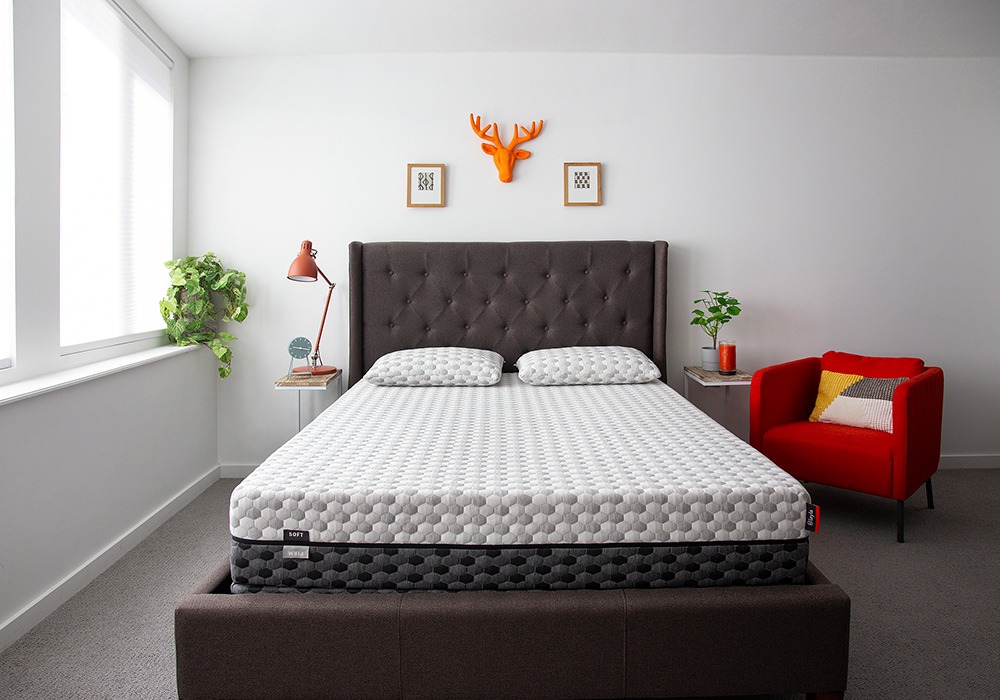
If you suffer from chronic pain or creaky joints, you might need to take a closer look at the mattress you’re sleeping on. Although a mattress may not solve all of your pain problems, it can definitely help, especially if you’re spending a third of your day on it. Additionally, over time, our bodies can change and a mattress that once hit all of your needs may not work for you anymore. Look for a mattress that engages with your pressure points while simultaneously offering support for the body parts more prone to misalignment or pain, like the hips, pelvis, spine, and back.
For a while, most people with back or joint pain assumed a firm mattress was the best way to support all those pesky pressure points, but a study conducted in 2003 suggests that a medium-firm mattress is best for those with lower back pain1. The trial assessed 313 adults who had “chronic non-specific low-back pain…who complained of backache while lying in bed and on rising.” After a 90-day sleep trial, those who had slept on the medium-firm mattresses had better outcomes for pain in bed, pain on rising, and disability than the patients who tried a firm mattress. With this in mind, you should still take advantage of a sleep trial to get a complete perspective on the type of mattress that will work best for you.
If your mattress is causing pressure points to build up at your hips or shoulders, you’ll be looking for a mattress that instead relieves pressure on those joints. Additionally, you’re going to want to look for a mattress that keeps your spine aligned, and if your mattress is too plush, you can sink too deeply for proper spine support. The trick is finding a mattress that offers both comfort and support for those pressure points, and we considered that when choosing our best mattresses for pain sufferers.
We recommend the Layla Memory Foam Mattress because it boasts copper-infused foam, which is heat-conductive, antimicrobial, and supportive.
Features:
- Layla comes with two firmness options on each mattress, so you can flip it to align with your preference
- Sleeps very cool thanks to the copper-gel layer
- High quality foam offers support and cradling for pressure points
6. Big Fig
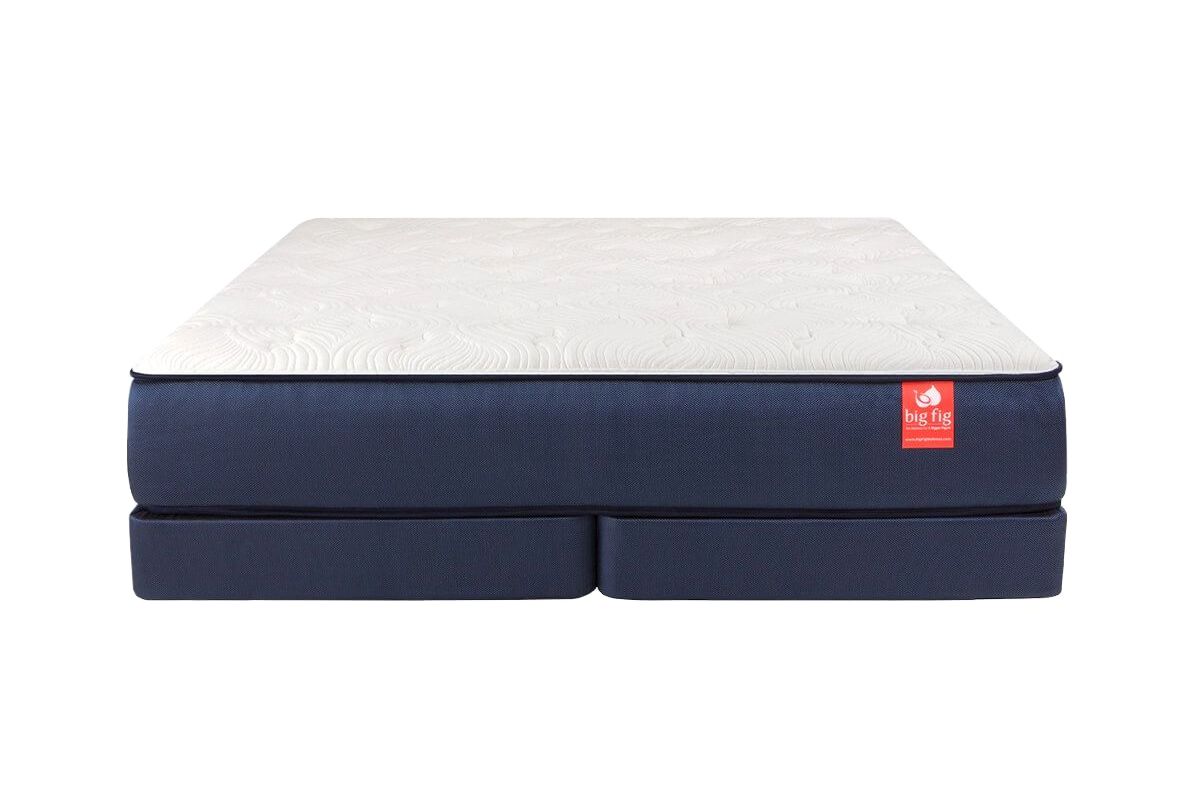
What about those of us on the heavier side? You’ll need to consider a few other factors when mattress-shopping. First off, a standard mattress may not hold up for as long as it normally would when supporting a heavier figure. Additionally, considering sufficient joint, back, and spine support is pivotal since you’ll need a bit more than some mattresses offer. Luckily, there are a few brands that cater exclusively to heavier figures, so they’ve already done the guesswork for you.
The ideal thickness for overweight or heavier figures is at least 10”, with a base layer thickness of at least 5”. Naturally, the more weight that’s pressing down on the mattress, the more support it needs to offer, along with engaging those pressure points. For overweight people, medium or medium-firm will offer enough support for the weight, as well as cradling the sleeper into a deep sleep.
You’ll also want to read reviews closely and look for any reports of sagging or body impressions. The base will play a large part in whether or not the mattress holds up over time, so follow the company’s specifications for choosing a proper base (often outlined on their website). Using the wrong base can also void the warranty.
Look for a higher density foam or quality coil units that will endure the test of time. It might be more sensible, albeit counter-intuitive, to start out with a firmer mattress than you’re used to, since a mattress will get slightly softer as you put more pressure on it.
Our pick for heavier sleepers is the Big Fig Mattress. This mattress was manufactured with heavy sleepers in mind, so it offers more support than the average mattress.
Features:
- Constructed with 1600 pocketed coils, 3 layers of high-density foam, and 1 layer of perforated foam for excellent support and durability
- Can support up to 1100 lbs
- Extra edge support to keep you on the mattress
7. Bear
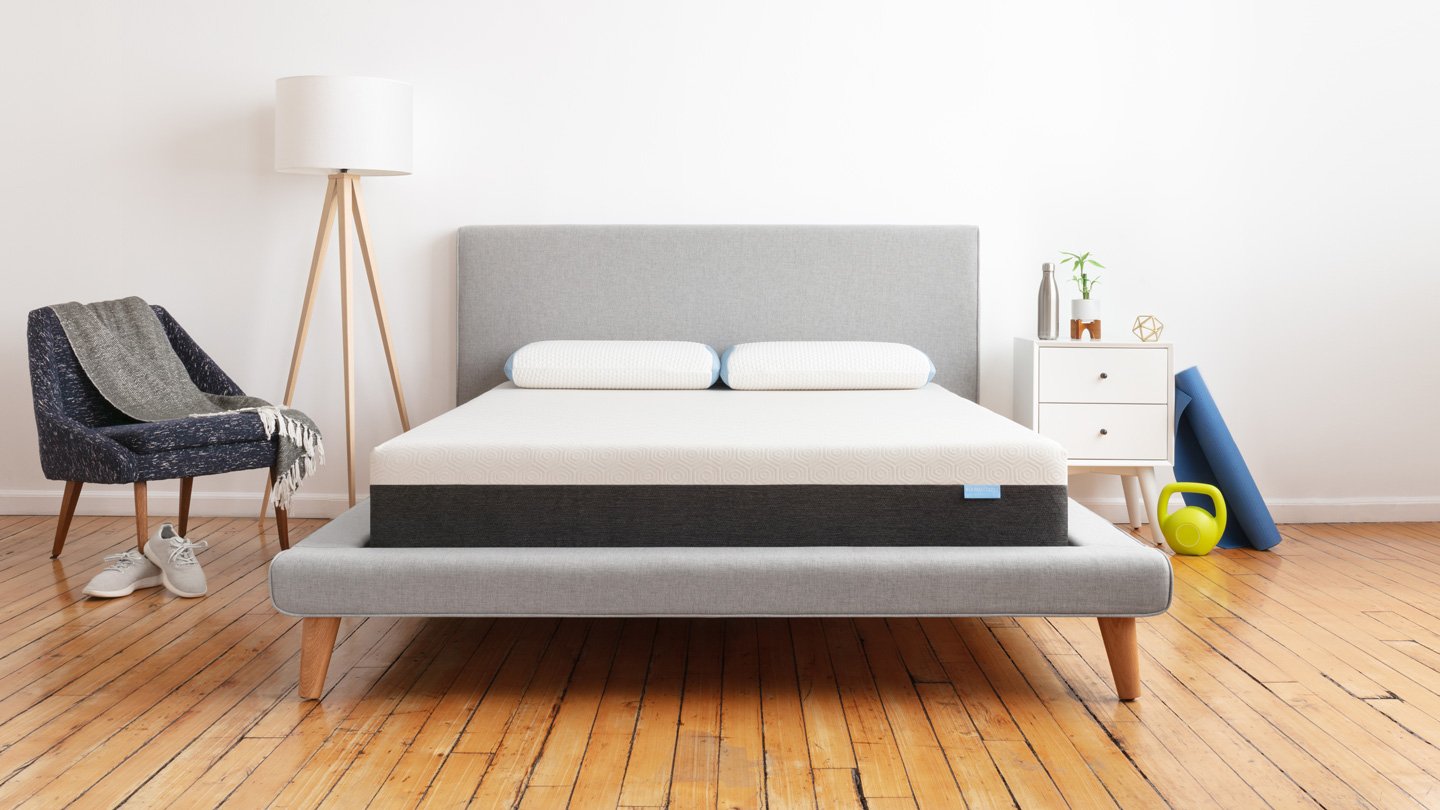
If you’re an athlete or even just living an active lifestyle, you may need to pick out a mattress especially made to cushion those sore muscles after a long day. After all, getting a good night of sleep can make you an even better athlete, so it’s worth the investment of time and/or money to find one that fits your needs.
Another thing to consider is mattress temperature – if you sleep too hot, your recovery probably won’t be complete and your athletic performance may suffer. Look for a mattress that reduces pressure points, sleeps cool, and supports sensitive areas like the lower back, hips, shoulders, and neck. If you’re a bigger athlete, consider some of the mattresses in our “Best Mattress for Heavier Sleepers” section.
Our pick for athletes is the Bear Mattress, a mattress made especially for those of us who shun a sedentary lifestyle.
Features:
- Celliant® cover improves circulation and can aid in recovery
- Cooling Graphite-Gel Memory foam ensures you sleep cool
- High-density foam layer gives you ample support
Most Durable Mattress
What makes a mattress durable? It often comes down to construction, materials, and of course, how you use it. That’s why most mattress warranties contain conditions that ensure you don’t misuse or mistreat the mattress, voiding the warranty and probably diminishing the mattress’ durability. Most mattresses–memory foam, innerspring, or hybrids, should last at least seven years. Some materials, like latex, typically last even longer (which is why mattresses made with latex are more expensive). When considering the most durable mattresses, we read through dozens of customer reviews before narrowing our choices down to these options:
- Avocado Mattress ($959 for a Queen): made with 100% GOLS organic certified rubber latex foam, organic certified wool, and organic certified cotton; 25-year warranty; 1, 414 tempered steel coils with a fully reinforced steel perimeter
- Loom & Leaf ($1,499 for a Queen): made with 5.5″ high-density support foam as the core, 5 lb. viscoelastic memory foam to give your body support and contour to its shape, and 2″ of enhanced cooling gel; 15-year warranty
Best Mattress for Insomnia Sufferers or Light Sleepers
Having sleep issues is not uncommon, but luckily there are lots of remedies out there to help you get to sleep. Considering the mattress you’re sleeping on can be a key in not just getting to sleep faster, but spending more time in REM, which is crucial to your overall health. Finding a mattress that you can actually sleep on can be hard, especially when there are a few other factors to consider: your sleep style, whether or not you have chronic pain, whether or not you sleep with a partner, and so on. You’ll also probably want to avoid mattresses that can be noisy (some innerspring models) or don’t isolate motion very well. We picked two mattresses we think would work great for those of you who have a hard time getting to sleep and/or staying that way:
- Brooklyn Bedding Signature Hybrid ($949 for a Queen): three firmness levels offered; 2″ top layer of TitanFlex™ foam, 2″ firm transitional Energex™ foam, 1,024 individually encased coils in the base create motion isolation
- Zenhaven ($1,899 for a Queen): made with latex support cores, “5-zone” comfort layer for spine alignment, flippable (luxury plush on one side, gentle firm on the other); 20 year warranty
Best Budget Mattress
A mattress that fits your budget doesn’t have to be uncomfortable. There are a multitude of options available today, so you shouldn’t have to sacrifice quality to save some money. Sticking to a budget is one thing, but you should also be aware of the different costs associated with certain manufacturing practices and mattress materials. For example, a certified organic mattress will cost more simply because becoming certified organic involves some extra work for the company. If your priorities go beyond budget, you should be prepared to pay for the cost of a more durable mattress, especially if it’s a hybrid or latex model. Considering these factors, we chose a couple of high-quality mattresses that can fit a range of budgets.
- Helix Sunset ($999 for a Queen): soft feel is ideal for side-sleepers, Memory Foam Plus Foam layer offers pressure relief, and the breathable cover helps you sleep cool
- Allswell ($345 for a Queen): hybrid construction made with memory foam and 2 gauges of coils, CoolFlow foam™ dissipates heat, and added edge support so you won’t feel like you’re falling off
Best Mattress for Chronic Pain Sufferers
There are lots of ways we manage our pain, and for those of us who suffer chronic pain, keeping it under control can be all-consuming. Getting a good night of rest can make a huge difference. So what should you look for in a mattress that can alleviate your pain? Finding the right one will also depend on your preferred sleep position–back and stomach sleepers can err on the side of too firm, and waking up with more pain; side sleepers may err on the too soft side, which causes them to sink into the mattress, throwing things out of alignment and (you guessed it) causing more pain. It helps to know before you shop what feel you’re looking for. Make sure to also read reviews of others who experience similar symptoms to see what their experiences with the mattress have been. We found a couple of high-quality options for those of you seeking pain relief while sleeping:
- Nest Bedding Hybrid Latex ($1,499 for a Queen): 1.5″ Eco Flex Quilting Foam, 3″ Certified Dunlop Latex layer, 1″ eco-friendly foam, 6″ Caliber Edge Coil Support Pocketed Coils, 1″ support foam
- Level Sleep Mattress ($1,199 for a Queen): LEVELsoft absorbs your shoulder to help reduce pain, LEVELfirm supports your lower back and side, and LEVELMedium contours to your hips and aligns your spine
Best Mattress for Heavy Sleepers
Heavier sleepers will want to look for a mattress that’s got built-in durability and is at least 12″ tall, since they will put more pressure on the mattress. Hybrid mattresses can be especially useful for heavier sleepers because they offer the comfort of foam or latex with the sturdy support of coils. Of course, if you don’t like the bounce of coils, going all memory foam might be the best choice for you. There are a lot of good options for heavier sleepers, and we’ve picked two for you to check out:
- Titan by Brooklyn Bedding ($999 for a Queen): Optional top-cooling panel, 1″ quilted top memory foam, 2″ Titanflex™ for contouring and pressure relief, 1,024 individually encased TitanCaliber™ coils
- Saatva ($1,099 for a Queen): four firmness level options, two mattress height options (11.5″ or 14.5″), Luxury Euro Pillow top, perimeter edge support, individually wrapped coils, spinal zone technology and durable steel coil support
Best Mattress for Athletes
Athletes will want to look for a mattress that doesn’t sleep too hot, targets their pressure points, and gives ample support to their back, spine, and pelvis. They’ll also want a mattress that aids in muscle recovery. Keeping that in mind, we chose a couple of good options for those who are more athletically-inclined:
- Performa Sleep ($875 for a Queen): copper-infused top layer wicks heat away, antiviral technology for a cleaner bed, 11″ of premium CertiPUR-US® foam, 7″ high-density Performabase layer for added support
- Luxi 3-in-1 Adjustable Mattress ($1,074): internal column grid ensures abundant airflow for coolness and pressure relief; option to change firmness options from soft, to medium, to firm
Company Reputation and Transparency
Typically the longer a company has been around, the more reputable they are. But you shouldn’t trust a company by their age alone – there are plenty of other factors to consider, and we’ll go over those, too. The company’s reviews can speak volumes, so we tried to pay special attention to companies who had garnered over 10,000 reviews. We also made sure to look at middle ground and lower star ratings, since a website often only showcases the highest reviews.
Many companies will try to improve their product’s design based on customer feedback. Mattress companies are no different. If you buy a Tuft and Needle mattress now, it isn’t the same mattress they were selling in their first two or three years of being a business. Foam or core layer densities may have changed, ILD ratings may have changed – it’s possible the entire manufacturing plant may have changed as well.
Do some sleuthing, and if you can’t find this information on the company’s website, reach out through their chat service or contact form.
Companies should also make it easy to filter their customer reviews so you can look at the high and low ratings in order to give yourself a thorough perspective. If they post customer reviews from other sites around the web (Amazon, Google, Yelp, etc.), read those too. Look for the number of reviews they advertise on their site, paying special attention to those companies with fewer than 1,000 reviews. That means the company hasn’t been around for long, so their product won’t have that longevity to stand on. This may not mean much to you, but the longer a company has been around, the more time they have had to revamp their product based on customer feedback or refine their customer service policies.
| Company | Average Customer Review | # of reviews on website |
| Amerisleep | 4.7 stars | 13,600+ |
| Leesa | 4.5 stars | 20,800+ |
| Ghost Bed | 4.5 stars | 17,300+ |
| Helix Bed | 15 dif. models, average 5 stars* | 6,000+ |
| Zenhaven | 5 stars | 23,000 “across the web” |
| Bear Mattress | 4.78 | 18,000+ |
| Layla | 4.5 | 4,100+ |
| Tuft & Needle | Unclear | 90,000+ |
| Casper | 4.75 stars | 17,000+ |
| Big Fig | 5 stars | 140+ |
Sleep Trials, Warranties, and Return Policies
Back before online mattress companies became the new norm, customers would try the mattress out for a few minutes in a store with a salesman nearby, looking mostly for what felt comfortable. After buying the mattress, the customer had limited options. If they decided it wasn’t the right fit after all they were often subject to restocking fees or very limited return policies. Some companies only allowed exchanges, no returns. Something new needed to happen to the industry. Enter the bed in a box phenomenon.
Now online mattress companies, eliminating the brief (and often ineffective) in-store mattress trial from the equation, let customers actually sleep on a bed in their own homes for anywhere from 60-101 nights with the chance to really try the mattress and see if it works for them. On top of these new perks, some brands will even offer pickup and donation or recycling of the mattress so the customer doesn’t have to deal with the hassle of sending it back.
Sleep Trials
At Healthy Sleep, a company’s sleep trial heavily factors into our recommendation. We believe the sleep trial along with the company’s warranty and return policy says a lot about the quality of the mattress and how much the company values customer satisfaction.
The length of the sleep trial depends on the brand – some offer 90 days, some offer 120. Most of them require you to try out the bed for a minimum number of nights (usually 20-30) before returning it, since getting used to a new mattress, like wearing new shoes, can require some time. It takes time to adjust to anything, whether it be a sleep schedule, a workout, or a haircut. The same goes for new mattresses – especially if the mattress you were sleeping on before was the wrong one for your sleep style, or even if it was just plain old.
Sleep trials are awesome, but they aren’t the only thing to research when you’re looking for a mattress. Make sure you’re aware of the company’s warranty and return policy.
Warranties
A warranty basically tells you how much confidence a company has in their product and how long they will stand behind that product, as long as the conditions of the warranty are upheld. Usually, the conditions relate to the mattress foundation and any defects caused by the product being faulty. The industry norm for mattress warranties is about 10 years, but some boast a lifetime warranty. While a lifetime warranty seems generous, research so far has been inconclusive on whether or not a mattress would still be comfortable or supportive after 10 years. The Better Sleep Council recommends that most good quality mattresses should be replaced after seven years, which suggests warranties lasting longer than 10 years are unnecessary. No matter the length of the warranty, there are always conditions that need to be met.
What’s usually covered in a mattress warranty?
Specifics vary depending on the company, but most will cover these things:
- Sagging or indentations (without any weight pressing down on the mattress); most cover indentations of 1”-1.5”, while a few cover indentations of .75” or greater
- Coils breaking or bursting out
- Foam cracking or ripping due to normal use
- Seams or zippers coming undone
Warranties will not cover your mattress if it’s damaged beyond normal use (burns, tears, stains, and so on caused by you, the owner). Many companies will ask for a proof of purchase, too, so make sure you keep that in a safe place just in case!
Every company is different, so we’ve outlined the warranty conditions for 10 mattress brands in the table below:
| Company | Warranty Length | Conditions |
| Amerisleep | 20 years | First 10 years cover parts/repairs. Second 10 years will replace the mattress at 50% of the original purchase price. Indentation less than .75” not covered. Mattress must be used on solid wood, non-spring, flat foundation, or bed platform with slats no greater than 3” apart. |
| Leesa | 10 years | Mattress must be on a solid base/foundation. Indentations less than 1” not covered. Damage done by the owner not covered. |
| Ghost Bed | 20-25 years | Indents less than 1” not covered. During the first 10 yrs, repair/replacement costs covered. Years 11-20, repairs at the cost of the owner or replacement of mattress at 50% of the original cost. |
| Helix Bed | 10-15 years | Mattress must be used on a firm, solid bed base. Indentation less than 1” not covered. Any flaw causing foam or springs to split/crack is covered. Physical damage done by the owner not covered. |
| Zenhaven by Saatva | 20 years | Within 2 years of purchase, the mattress will be replaced. Years 2-20, repair/re-covering charges covered, but the owner must pay $99 of transportation costs. They also offer a Fairness Replacement Option (see website) |
| Bear Mattress | 10 years | Retain proof of purchase. Indents less than 1” not covered. First 10 years, they will cover repairs/replacements of parts. Must use proper foundation. |
| Layla | Lifetime | Indentations 1” or less not covered. Must use proper foundation/support or bed with center support bar. Cannot use the mattress for commercial use. |
| Tuft & Needle | 10 years | Indents less than .75” not covered and must be visible when no weight is applied to the product. Any flaw causing the foam to split/crack under normal use is covered. Any defect in the cover such as fabric tearing or stitching unraveling is covered. |
| Casper | 10 years | Mattress must be on a solid base. Mattresses cannot be used for commercial purposes or warranty is void. Indentations less than 1” not covered. Defects causing the foam to split or crack despite normal usage are covered. Damage done by the owner is not covered. |
| Big Fig | 20 years | Covers coils or wires that are loose, broken, or protruding through the fabric. Indentations less than 1” not covered. |
Returns
Most of the companies outlined in this article offer free pickup of your mattress within the sleep trial period and grant a full refund. Some charge a transportation fee or require that you donate the mattress yourself. The return policy often correlates with the sleep trial. Earlier, we stated that mattress companies require you to try out the mattress for a minimum number of nights before returning it, accounting for the adjustment period. However, if you notice a defect in the mattress before this period, you can always contact the company to see about getting a new model sent to you immediately.
Part of the convenience of creating a sleep trial in the customer’s own home is the ease with which they can return the mattress if they find it doesn’t work for them. The most convenient and environment-friendly option is, of course, for the company to pick up the mattress and donate or recycle it. In some cases, however, the customer is required to donate the mattress themselves, creating a hassle for someone that’s already unsatisifed with the product and probably cranky because they haven’t been getting a good night’s sleep! Make sure you’ve read the company’s return policy thoroughly before taking the plunge.
We selected companies who offered a generous sleep trial (longer than 30+ days) and full refunds within that time frame.
You can find the details of each company’s return policy and sleep trial below:
| Company | Sleep Trial | Return Policy Details |
| Amerisleep | 100 nights, 30 nights preferred but not required | Amerisleep will refund you during the sleep trial period. They will pick up your mattress for free and donate or recycle it. |
| Leesa | 100 nights, 30 nights preferred but not required | Leesa will coordinate pickup of the mattress and refund you the full purchase price (AK & HI customers must pay $100 fee to return mattress). |
| Ghost Bed | 101 nights, 30 minimum |
GhostBed will pick it up and donate/recycle it. They give you a full refund. |
| Helix Bed | 100 nights, 30 nights minimum | Helix will pick up and donate/recycle your mattress, then they will refund you. |
| Zenhaven by Saatva | 120 nights | You are responsible for $99 transportation cost to return it, but they will pick it up. |
| Bear Mattress | 100 nights, 30 days minimum | Bear will pick up the mattress and donate it to a charity near you. They will refund you the cost of the mattress. |
| Layla | 120 nights, 2 weeks minimum | They will pick it up and donate it (you do not need to save the original packaging). Keep the donation receipt to get a full refund. Shipping fees to AK, HI, and Canada are non-refundable. |
| Tuft & Needle | 100 nights | Shipping fees to AK and HI non-refundable. The mattress will be donated to charity. T&N will cover the charges and refund you. |
| Casper | 100 nights | A little vague on their website, but they do pick it up and give you a full refund within the sleep trial period. |
| Big Fig | 120 nights, 2 weeks minimum | They will come to pick it up and refund you within the sleep trial period. No restocking fees, return delivery fees, or extra charges. |
What are the Most Common Mattress Materials?
Although foam mattresses are seemingly all the rage right now, you might find they aren’t the best for you. On the other hand, if you’ve been sleeping on an innerspring mattress your whole life, you might not know what you’re missing! Either way, it helps to know the different types of mattresses out there when you’re making your decision.
| Mattress Type | Material | Average cost for a Queen-size |
| Memory Foam | Viscoelastic polyurethane foam | $900 |
| Latex | Natural latex, blended latex, or synthetic (comes from the sap of a rubber tree) | $2,000 |
| Innerspring coil | Pocketed coils, usually made of metal and individually wrapped for motion isolation | $950 |
| Hybrid | Half innerspring coil and half memory foam; typically the coil makes up the core support layer and the foam is part of the top comfort layer | $1,650 |
Memory Foam
Many of the “bed in a box” mattress companies use polyurethane foam as the main comfort layer in their mattresses. It’s a popular option right now because it boasts a comfy feel and minimal motion transfer (especially helpful if you’re sharing your bed with a partner). If you’re used to the bounce and feel of an innerspring coil, a foam mattress might not be for you. However, if you’re a side/combo sleeper or need some pressure relief, a memory foam mattress could be the answer to your woes.
Latex
Latex is incredibly durable, which is why it’s one of the more expensive options. On average, latex beds cost between $1,500-2,500 (a Queen costs about $2,000 on average), which is more spendy than other mattress types on our list, but many consider the quality to be worth the extra cost. It’s also got a bouncy feel, similar to the familiar innerspring, so it won’t sink in as much as memory foam.
Innerspring coil
These are the mattresses you probably grew up with, and their familiarity is hard to break away from. Older models are bouncy and noisy, but now most innerspring coil mattresses are made with other materials to mitigate the squeakiness and bump up the comfort factor. Many companies market their innerspring mattresses as having “pocketed coils,” which are wrapped in fabric, helping make motion transfer a thing of the past.
Hybrid
The term “hybrid” has many connotations, but Healthy Sleep will use it in its most traditional sense: a mattress that is half coil, and half non-coil materials (like latex or memory foam). Hybrid mattresses were designed to have the support and bounce of a traditional innerspring coil mattress with the pressure-relieving abilities of a memory foam or latex mattress. Hybrids are a great option for athletes or heavier sleepers since they offer both comfort and ample support.
No matter what type of mattress you choose, you should ensure that with your specific needs, your mattress holds up over time. After all, what’s the use of an expensive mattress if it wears out after a few years? That brings us to our next category: durability.
What Makes a Mattress Durable?
Just like your shoes and your car, you expect your mattress to hold up against wear and tear over time. We’ll address the common complaints linked to a couple of different mattress types in this next section.
| Mattress Type | Average Lifespan |
| Memory foam | 7 years |
| Innerspring | 7-10 years (25% of owners report sagging w/in 3 years) |
| Hybrid | 6 years |
| Latex | 8 years |
Memory Foam
A common complaint of foam mattresses in their early days is that they couldn’t hold their shape as well as innerspring coil mattresses. Most foam mattresses now have a hefty support core to solve this problem, and hybrids even combine foam and innerspring coil for extra support.
A study conducted in 20162 measured the strength and flexibility of three different polyurethane foam (memory foam) mattresses under artificial weathering. The study found that because of the foam’s chemical structure, they resisted bottoming out and deteriorating. Although the study was published about three years ago now, the most popular foam mattress companies continue to innovate and improve their products, solving the problem of foam being “less supportive” than innerspring coils.
Innerspring Coil
It used to be that coil mattresses were all made with open coils, which were durable but not great at controlling motion transfer. They could also burst out of the side of your mattress after moderate-heavy usage. Now, mattress companies typically use “pocketed coils,” which are individually wrapped in fabric to help solve that motion transfer problem. They are not attached to each other like open coils, so they contour to your body much better than the open coils did.
Knowing what makes up the different parts of your mattress is key in understanding how durable your mattress can be.
Other Mattress Brands to Consider
|
Brand |
Features |
Sleep Trial |
Warranty |
|
Casper |
Zoned Support™ provides firmness where you need it, with two layers of pressure-relieving and breathable foam |
100 nights |
10 years limited; indentations less than 1” not covered. Must use proper foundation. Physical defect in mattress causing it to crack or split despite normal use is covered. Damage done by owner not covered. |
|
Purple |
Smart Comfort Grid cradles pressure points, dual-layer polyurethane foam base adds support, and the mattress has a medium-firm feel |
100 nights |
10 years limited; indentations less than 1” not covered (more info about indentations on their website). Must use proper foundation. Damage done by owner not covered. |
|
Leesa |
2” premium foam comfort layer, especially comfortable for side sleepers, 2” memory foam recovery layer, and 6” dense core foam layer as the base |
100 nights |
10 years limited; indentations less than 1” not covered. Must use proper specified foundation or base. Any physical defect causing damage to foam despite normal use is covered. |
|
Winkbeds |
3-Step Back Relief System™, Proprietary Lumbarlayer™ prevents lower back sagging and misalignment, triple layer Heat Disperse™ tech wicks heat away |
120 nights |
Lifetime limited; indentations less than 1.5” not covered. Must use proper base or foundation. Any defect causing the mattress to split or crack despite normal use is covered. |
Can a Mattress Topper Help?
A few brands offer some kind of mattress topper or comfort layer to add to the top of your mattress if the one you bought is still too firm for you. Typically, companies will offer this option during the Sleep Trial to see if the increase in foam leads to a better support system for you. A few reviews we read talked about these toppers, saying they still didn’t make the mattress soft enough and they wished they’d just returned the mattress instead. While a topper isn’t considered a replacement mattress, it can help adjust the bed to fit your preferences. Contact the company through their customer service line to find out if they offer this option.
Sleeping Positions
Your sleeping position will determine which bed is best for you (and your partner if you’re sharing a bed). Let’s go over what each sleeper type needs to look for in a mattress.
Combo sleepers: Combination sleepers will find themselves in all sorts of places throughout the night, but they should refer to their dominant position when mattress-shopping. That’s the position they’re in upon waking up. Combination sleepers may find their most comfortable mattress to be anywhere from medium-soft to medium-firm. Luckily, most online companies have at least one model that falls in the “medium” category, but if you’d like more options, look for companies that offer multiple firmness levels or even a dual-firmness bed.
Side sleepers: With a few exceptions, most side sleepers are at their most comfortable on a medium-feel mattress. Now, “medium” is a pretty broad term and mattress companies aren’t exactly regulated in how they market their beds. You will need to do some more research by reading customer reviews and looking at the mattress components to decide if the mattress will be equal parts soft and supportive.
Back sleepers: Back sleepers will be looking for something on the firmer side, but they still need support! Most people who prefer sleeping this way like a mattress that won’t “eat” them–in other words, they should feel like they’re laying on top of it, not inside of it. Because of this, foam mattresses may not be the best option for back sleepers unless they have a sturdy support foam as one of their layers or they use innerspring coils (like foam hybrid beds do).
Stomach sleepers: Stomach sleepers need to give their sleeping set-up a bit more TLC than the other sleeping positions on our list. That’s because their neck, spine, and back are at a higher risk to get misaligned if they sleep on a faulty mattress or pillow. Stomach sleepers should look for a medium-firm or firm mattress that will properly align their spine. Additionally, they should use a pillow that won’t arch their neck upwards too far or let it sink down too low.
Common Firmness Levels
If a mattress company sells more than one model, they’ll typically each have different firmness levels. The three basic levels are soft, medium, and firm. Some companies take it one step further and add even more levels in between for optimal customization.
A scale below represents average firmness levels represented in most mattress brands’ selection. The scale goes from 1-10, but keep in mind a mattress rated at a 1 or 2 on the scale would be much too soft and not offer any support:
- Plush (3)
- Soft (4)
- Medium-Soft (5)
- Medium (6)
- Medium-Firm (7)
- Firm (8)
- Extra-Firm (9-10)
What to do with your old mattress
So, you’ve finally found the mattress of your dreams. Now what do you do with that old one taking up space in your house? If the company you bought your new mattress from offers something called White Glove Delivery, that means they will set up your new mattress and remove the old one. Some companies include this service for free with the purchase of the mattress, while others charge an extra fee. If you know of a local charity nearby, you can donate the mattress there as well.
Did You Find the Mattress for You?
We hope after reading this article you feel more educated and armed with useful information to guide you in finding the right mattress. There’s so much to consider and it helps when you start with your priorities already in place–make sure you have a budget, you understand your sleep preferences (and your partner’s sleep preferences if you have one), and you’ve thoroughly read as many reviews as possible.
References
-
Kovacs, Francisco M., Victor Abraira, Andrés Pena, José Gerardo Martin-Rodriguez, Manuel Sanchez-Vera, Enrique Ferrer, Domingo Ruano, et al. “Effect of Firmness of Mattress on Chronic Non-Specific Low-Back Pain: Randomised, Double-Blind, Controlled, Multicentre Trial.” Lancet 362, no. 9396 (November 15, 2003): 1599–1604. doi:10.1016/S0140-6736(03)14792-7.
- Scarfato, Paola, Luciano Di Maio, and Loredana Incarnato. “Structure and Physical-mechanical Properties Related to Comfort of Flexible Polyurethane Foams for Mattress and Effects of Artificial Weathering.” Composites Part B: Engineering 109 (September 21, 2016): 45-52. doi:10.1016/j.compositesb.2016.10.041.
This article is for informational purposes and should not replace advice from your doctor or other medical professional.
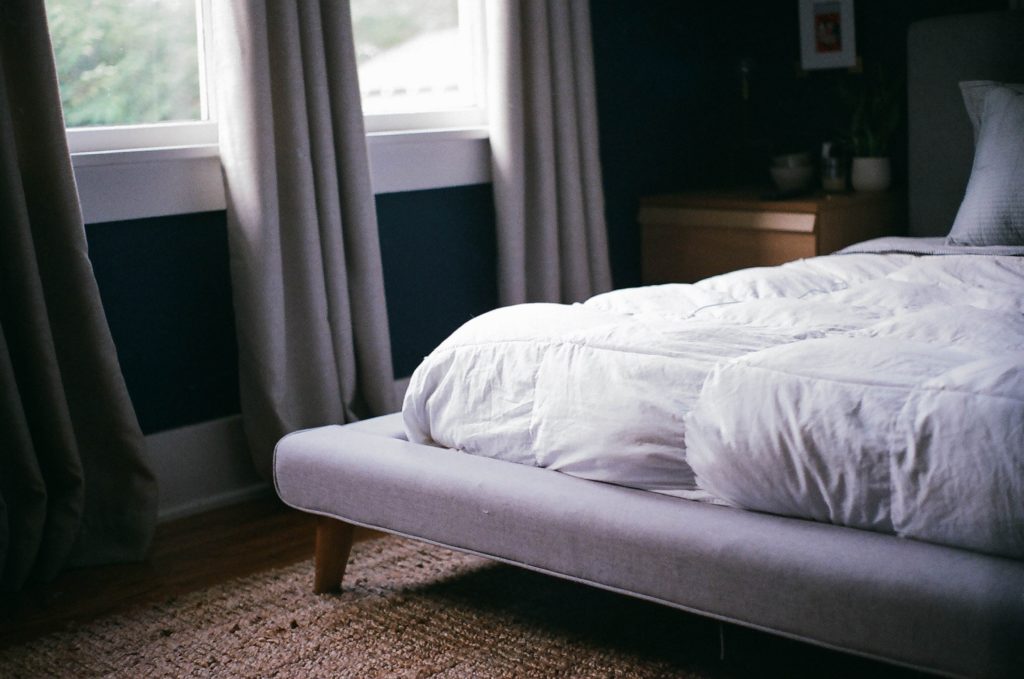
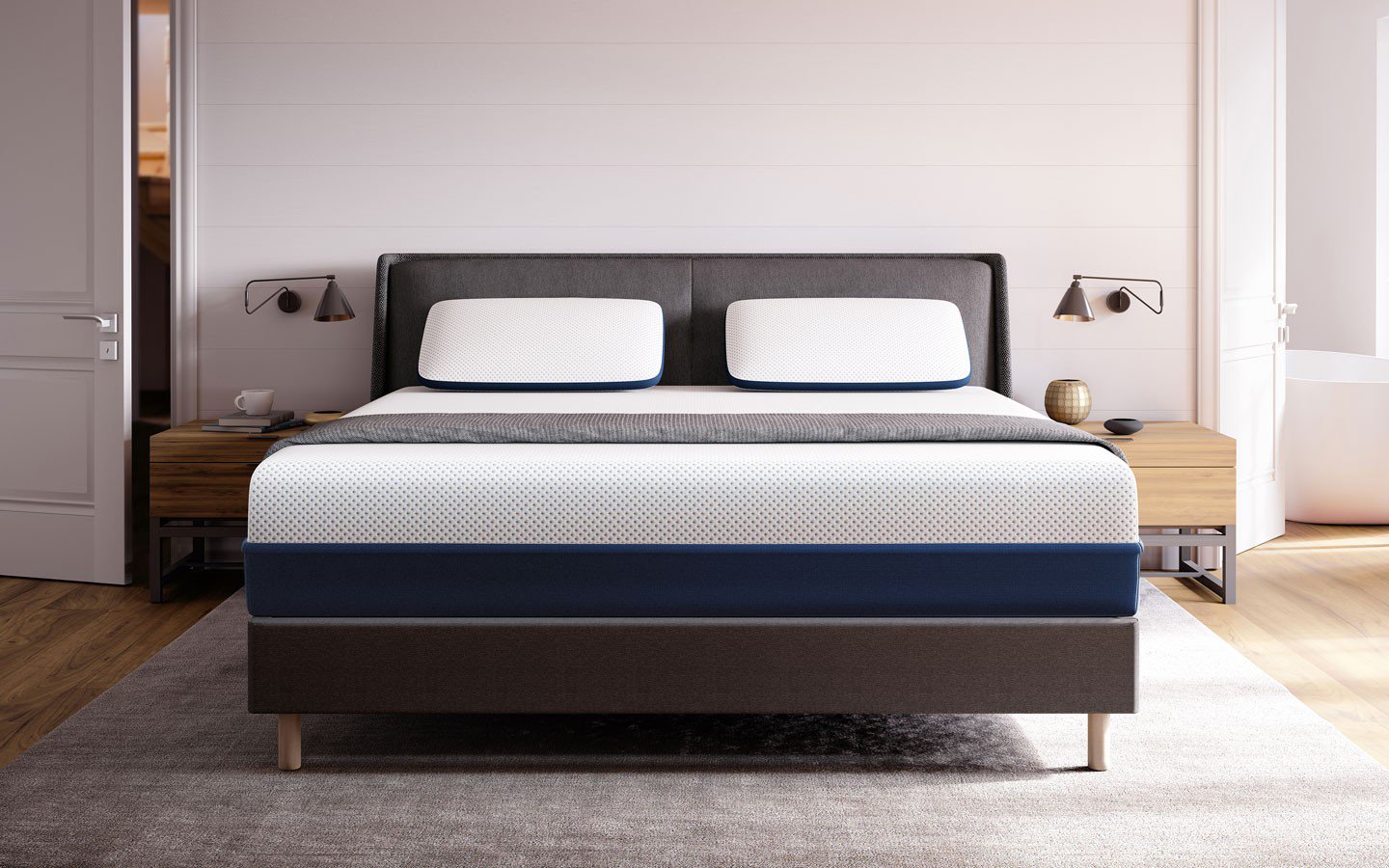
The Conversation (0)
Start a discussion, our content team tries our best to respond to comments. However replies should not be a substitute for medical advice from your doctor.*